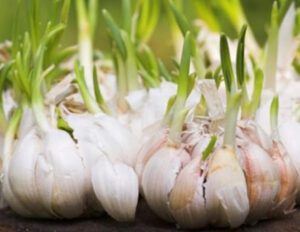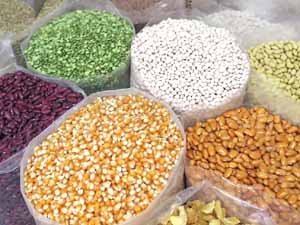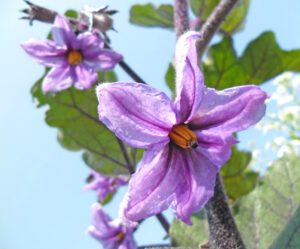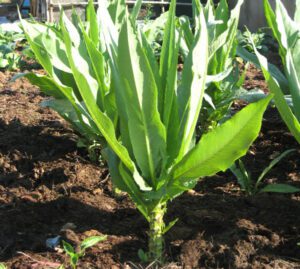Growing kale organically in home garden is very easy. Everyone can grow this wonderful vegetable in their home garden, even the beginners. Only a few plants can fulfill the demand of this green. So, growing kale organically in your home garden can be a great way for enjoying this vegetable.
Kale (Brassica oleracea) is grown mainly for it’s edible green leaves. Depending on the variety, a kale plant has green or purple leaves and the central leaves do not form a head. Kale is considered to be close to wild cabbage and it is also called as ‘Leaf Cabbage‘.
Kale has a number of health benefits, because it is rich in minerals and vitamins. It is rich in fiber, iron, calcium and vitamins A, C and K. Kale is a great addition to salad and can be used as a garnish. Raw kale consists of 1% fat, 4% protein, 9% carbohydrates and 84% water.
Kale is amazing, and the best way to make it even better is by growing your own. If you have some space available in your home garden, then you should start growing kale.
How to Grow Kale
Growing kale in home garden is extremely easy. Here we are describing more about growing kale organically in home garden from planting, caring to harvesting.
Choose a Variety
Kale varieties are categorized into many types depending on their leaf type. These leaf types are bumpy-leaf, curly-leap, leaf and spear and plain-leaf. And within these types, there are many other varieties available. But some common and popular kale varieties are Red Russian, Vates and Winterbor. Choose the right variety for your home garden depending on it’s availability and surviving ability in your area. You can consult with any local home gardener for better recommendation.
Purchase Seeds
After choosing the right variety, you have to purchase the seeds. You can purchase seeds from any of your nearest seed supply stores. You can also consider ordering the seeds online, as today there are many seed suppliers available with online stores. Just ensure to purchase good quality seeds. Because good quality seeds ensure good production and also the quality.
Best Time for Growing Kale
Kale is an extremely hardy plant, and can even tolerate fall frosts. It is actually a cool-season green. It grows best in the spring and fall. You can actually set out plants pretty earlier in spring as long as you are able to protect the plants with a cover from severe cold winds. Although, kale plants can survive in temperatures as low as minus 15 degrees Celsius.
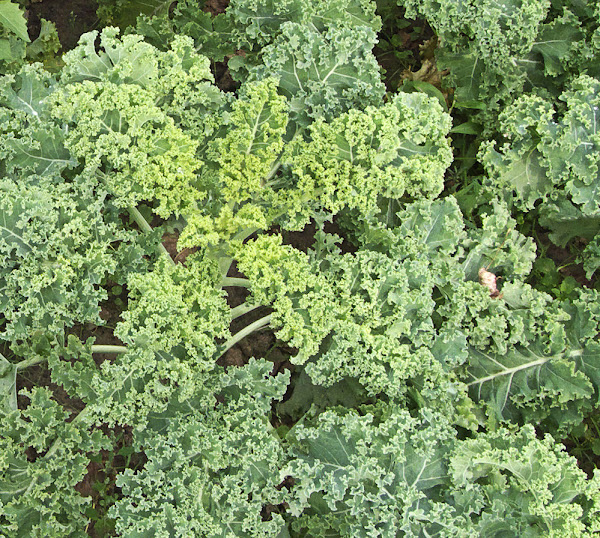
Preparing the Soil
Kale plants can be grown in almost all types of soil. But they grow best in loamy soil which is well drained. Kale plants require full sun for best growing. While preparing the soil for growing kale, adding adequate amount of organic fertilizers will be good. So, till the soil and add homemade compost or well-rotted aged manure. This will provide the plants with enough nutrients.
Planting Kale Seeds
Kale plants are grown from seeds. You can actually plant the seeds at any time, from early spring to early summer. If you plan for growing kale plants late in summer, then you can expect to harvest from fall until the ground freezes in winter. Level the soil and mark several rows for planting kale seeds. Planting the seeds in rows will make the caring process much easier. While planting, sow the seeds 1/4 to 1/2 inch deep. Germination time can very depending on the temperatures.
Caring for the Kale Plants
After planting, the kale plants will require additional caring for better growth. Here we are describing more about the common caring process for growing kale plants.
Fertilizing: Kale plants don’t require additional fertilization if you already have prepared the soil by adding organic fertilizers.
Watering: Watering is important for better germination. So, water regularly after sowing the seeds. Also water the plants regularly when they are growing. But be sure not to overwater the plants.
Mulching: Mulching not only helps to retain moisture in the soil, but also helps to control weeds from the garden. So, mulch the soil heavily after the first hard freeze. Use organic materials for mulching such as straw, compost, dry leaves, grass clippings etc.
Controlling Weeds: Weeds consume most of the nutrients from the soil. So controlling them is important. You can remove the weeds while preparing the soil. And hand control if you notice additional weeds. You can also use a hoe for controlling weeds from your garden. Heavy mulching should control most of the weeds from your garden.
Thinning: Kale plants don’t grow well if they are overcrowded. So thinning is important for growing kale. Thin the seedlings to 8-12 inches apart, 2 weeks after germination.
Pests and Diseases
Kale plants are less prone to diseases. But they can be affected by some pests such as aphids, cabbage worms and flea beetles. You can remove and destroy the affected leaves or entire plants. And using organic insecticides will also be effective for controlling most of the pests from your garden.
Harvesting
Depending on the variety, the kale leaves will be ready for harvesting when they reach about the size of your hands. While harvesting, avoid picking the terminal bud, because this will help to keep the plants productive. And it is best to pick about one fistful of leaves per harvest. The leaves will taste more sweeter with a touch of frost.
Kale leaves are eaten in many different ways. You can cook the larger leaves just like spinach leaves. And the small, tender leaves can be eaten uncooked and can be used in salads.
These are the common ways for growing kale organically in home garden. Kales are actually amazing, and home grown kales have much better taste and flavor. Hope you have enjoyed this guide. Good luck!
